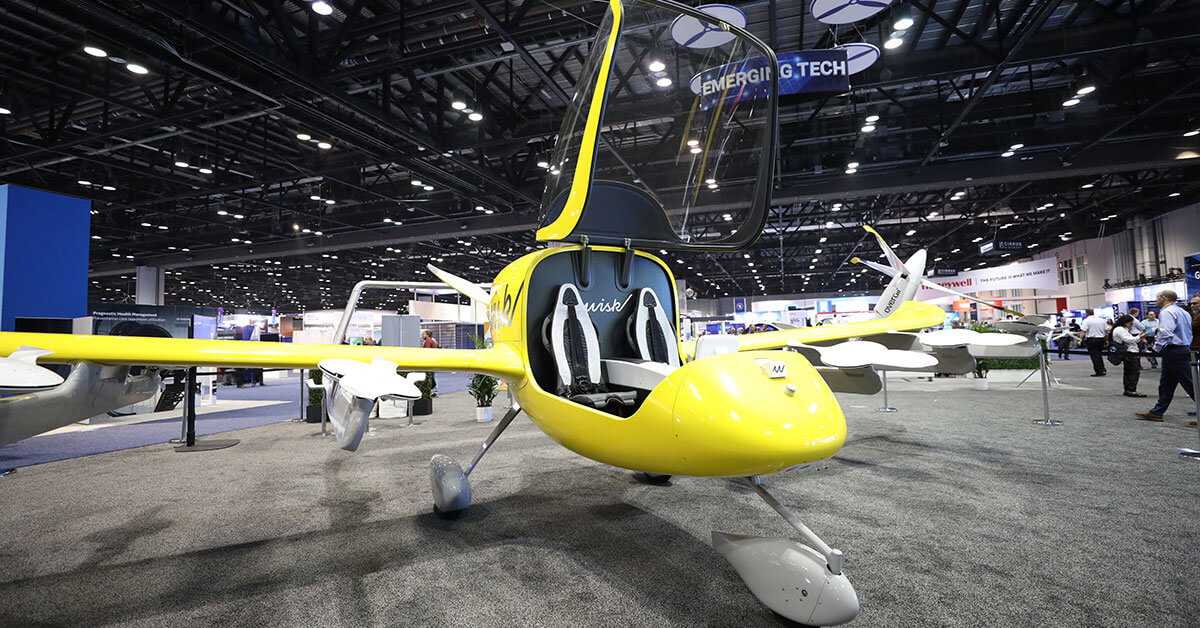Preparing Flight Departments for New Technologies

Oct. 20, 2022
A 2022 NBAA Business Aviation Convention & Exhibition (NBAA-BACE) session examined the role of business aviation flight departments in the rollout of advanced air mobility (AAM) aircraft and unmanned aircraft systems (UAS), as well as the challenges to be overcome in introducing these new technologies into the national airspace system in the years ahead.
While there are clear technological and regulatory hurdles to clear, perhaps foremost among them is overcoming concerns regarding the safety of AAM vehicles. Charlton Evans, CEO and principal consultant at End State Solutions, believes it is only a matter of time before technology resolves such worries.
“We’ve seen the innovation that’s come to general aviation and the [Part] 121 world,” he said. “For example, GPS is more automated, more advanced and it’s safer. The advances our industry is making in this little microcosm of AAM will inevitably spill over and influence how we do business in general aviation, with innovations and automation that are only going to enhance the safety and lower the risk of the system overall.”
Paul McDuffee, an executive operations analyst for Supernal, pointed to work underway by NASA, the FAA and industry partners to enable full-scale – and, ultimately, autonomous – AAM operations alongside crewed aircraft in the national airspace system.
“We will not advance the AAM agenda without a lot of data-sharing between operators, air navigation service providers and flight departments to find out ‘where all the fleas are on the dog,’ and we’re going to find a lot of them,” he said. “We will need an awful lot of cooperative data-sharing from FBO operators and fleet managers to achieve this phenomenal vision of a very robust, routine, safe and highly automated ecosystem.”
Community acceptance is another important consideration, both among the general public and within the legacy aviation community.
“Six years ago, people had a hard time wrapping their minds around drones flying over their houses on deliveries,” said Kristen Costello, senior director, flight compliance at DroneUp. “I’d say the acceptance factor is much higher now.
“Ensuring our legacy aviation community is informed and accepting of other realms [of flight operations] is so important to fostering wider community acceptance of these technologies,” continued Costello. “Everybody knows a pilot, and if that pilot is saying, ‘Yeah, drones are great!’ That goes a long way.”
However, some reluctance clearly remains within the aviation community to bridge that divide, including concerns over many UAS and AAM developers being completely new to the industry.
“They are nascent companies in terms of their exposure to aerospace, but they are super smart,” Evans said. “They’re also up against the FAA’s very rigorous process when it comes to type certification and production certification and must get through that filter of ‘what if.’”
“I’m the old gray-haired guy representing aviation, working with a group of energetic, very smart, very young engineers,” McDuffee added. “It’s an education process [for them] to embrace the culture, the importance we place on safety and reliability and to understand and appreciate that the rule base that we all work under has evolved over a long period of time and needs to be adhered to.”
Costello also emphasized the need to develop the necessary workforce to support these new aircraft, on top of ensuring enough qualified personnel to support existing aviation operations.
“We work with Part 141 universities and accredited collegiate programs, and they ask us what they can do to prepare the workforce for what [we] need,” she said. “I think in a few years – if not already – you’ll see degree programs just for AAM. Providing the younger generations with this exposure and education will also feed into the acceptance.”
Any person who attends an NBAA convention, conference, seminar or other program grants permission to NBAA, its employees and agents (collectively "NBAA") to record his or her visual/audio images, including, but not limited to, photographs, digital images, voices, sound or video recordings, audio clips, or accompanying written descriptions, and, without notifying such person, to use his or her name and such images for any purpose of NBAA, including advertisements for NBAA and its programs.
Related Articles
March/April 2024
FAA’s Top Airport Official Discusses Safety, AAM and Vertiports
March 25, 2024
MEDIA ADVISORY: EBACE2024 Advanced Air Mobility Showcase Includes a ‘First’ on Event’s Airport Display
January 17, 2024
NBAA, Association Partners Voice Concerns with Aeronautical Activity Definition
Nov/Dec 2023


 International Business Aviation Council Ltd.
International Business Aviation Council Ltd.